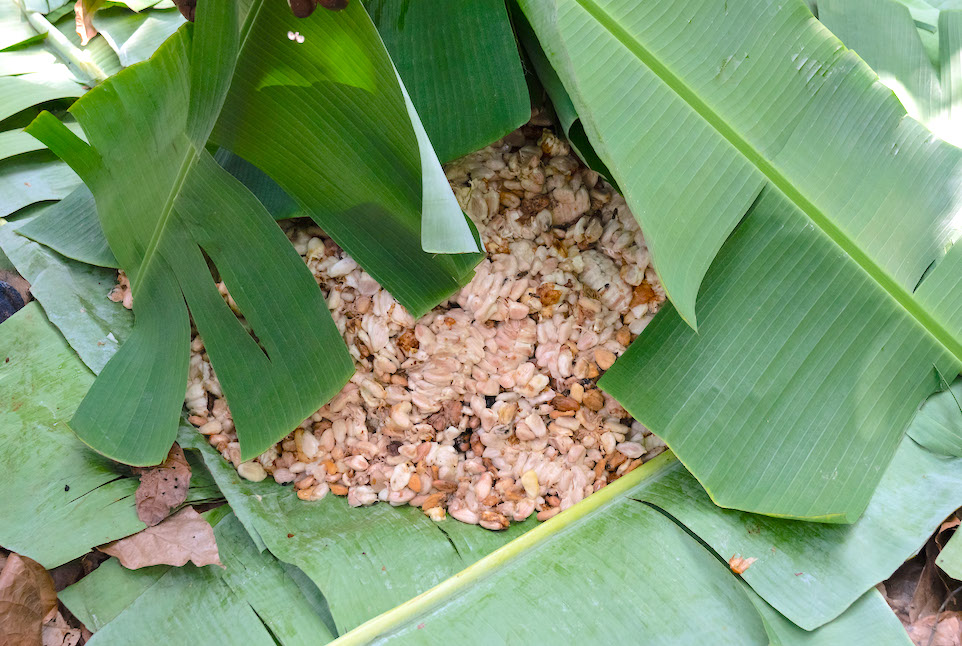January 5, 2022

Cacao fermentation is essential for the development of the final chocolate flavour and its aromas. Despite this process commonly being refered to as bean fermentation, what actually ferments is the white mucilaginous sugary pulp that surrounds the beans.
The fermentation releases heat and creates an acid environment which results in the chemical and physical transformation of the beans. Everything starts with an anaerobic phase (without oxygen). During this phase, the sugars are consumed and the mass of beans acidifies, leading to a “chemical cooking” of the beans. The anaerobic phase is alternated by aerobic (with oxygen) fermentation by means of heap turning. When oxygen is present, the fermentation releases a lot of heat and further cooks the beans.
The number of heap turns and total duration of the process vary with the quantities, variety of cacao and some experience-based adjustments linked with the local yeast and bacterial flora.
While the method of fermentation is crucial to the final quality of the cocoa beans, the conditions in which the pod forms also play their role in the success of this process. Thanks to the good climate conditions of the past 3-4 months, there should be enough mucilage in the main crop pods harvested up to now to ensure good fermentation.
Read More
Related Posts
No Results Found
The page you requested could not be found. Try refining your search, or use the navigation above to locate the post.
